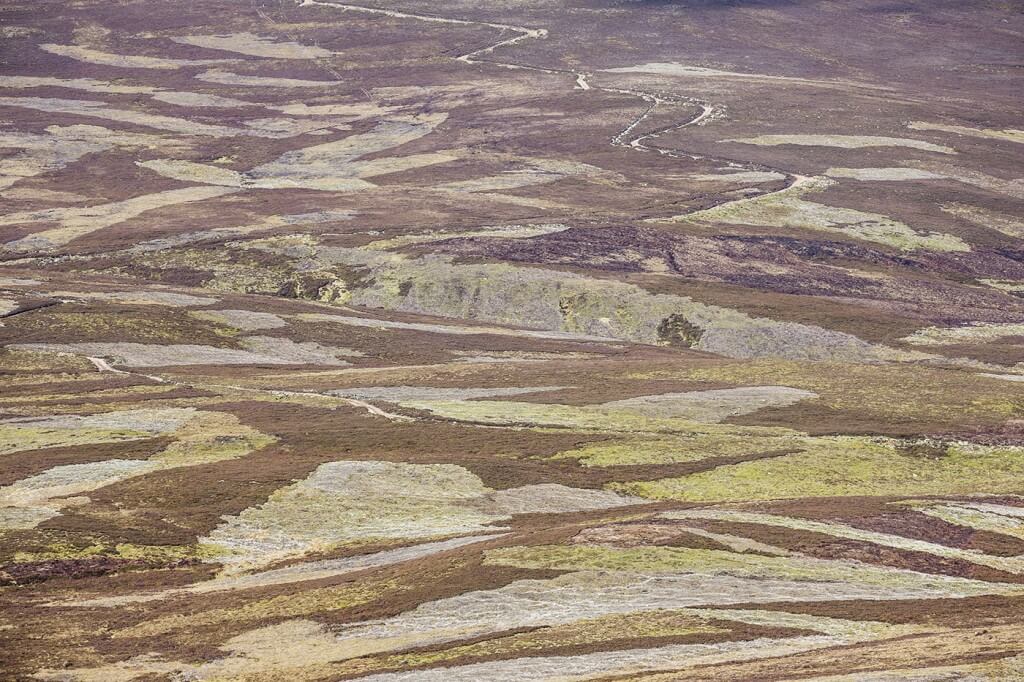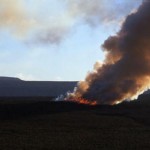
Yorkshire Water supported the study released on Wednesday which looked at the impacts of heather burning on the wider environment.
I contacted Yorkshire Water and was impressed by their speed of reply. My first contact was with a young lady called Brook with whom I was allowed to chat online – this was an excellent way to ask my questions about the Leeds University study. Not surprisingly, Brook , who I imagine is more often dealing with complaints about bills or supply, didn’t have all the answers to hand but she promised to pass on my details and that I would be contacted.
I find this is often the kiss of death to any enquiry to a large corporate, but Yorkshire Water got back to me quickly to say they couldn’t get back to me quickly with a full answer – I understood that. But they did get back to me by the end of Wednesday afternoon with this and they are happy for me to share it with you:
‘As promised, below is an explanation of our position on peatlands and their effect on our reservoirs. Excuse the long response but I hope you appreciate it’s a complicated issue.
45% of Yorkshire Water’s supplies derive from internationally important peatland uplands that drain into our reservoirs. Over the last 30 years the colour in the water has increased, caused by degraded peat. Increased colour in the water costs more to remove in the treatment process so high quality drinking water can be produced for our customers.
We have commissioned extensive research into the cause of the increased colour, including work with Leeds and other universities. The key factors are moorland drainage; overgrazing; historic atmospheric pollution and finally heather burning. All have increased colour but the impact of burning was less certain. The conclusions from EMBER add to the evidence base that current management by burning is having an adverse effect.

Whilst banning heather burning may seem a logical step, it does not address the more fundamental issue; the need to conserve and enhance active blanket bog and meet the needs for biodiversity, farming, grouse management and water quality management in terms of colour. We have been working closely over the last 6 months with Natural England, the Moorland Association, RSPB and the Heather Trust on a solution. Through reasoned and impartial debate, all parties are now agreed that active blanket bog with a reduction in heather coverage can deliver what we all need from the uplands; Biodiversity, Water, Carbon, Sheep and Grouse. Active blanket bog with an abundance of sphagnum and other peat forming mosses will sustain the heather needed for grouse, but it will not grow as vigorously, and will therefore require far less burning, if any. We believe this is a significant change in the future management of these incredibly important habitats and something that would not have happened if the call to ban heather burning immediately was implemented.
Over the last 4 years we have applied the research findings and invested in moorland restoration by blocking man made moorland drains and revegetating bare peat in the worst areas. Over the next six years we will be investing further to secure the quality of the water draining into our reservoirs by further moorland restoration.‘.
[registration_form]
Very encouraging, but it is hard to see how Yorkshire Water’s objectives can be compatible with the short rotation muirburn considered necessary for driven grouse. The aim of the short rotation is to maintain heather no older than the building stage, the most vigorous stage where it out competes all another vegetation. The slower growing heather and more diverse vegetation envisaged by Yorkshire water doesn’t really fit with that. It is also very difficult to ensure compliance in managing semi natural upland habitats, compared with say arable farmland and that problem is most acute with muirburn. If you add to this the explicitly anti social attitudes and behaviour of grouse managers there is little likelihood of driven grouse moors cooperating or coexisting with wider objectives. It is really encouraging to see the widening front on which they are being attacked, from raptors to ethical consumption, to ecosystem services to land reform.
Yorkshire Water are to be congratulated on tackling this issue head-on. They have put very significant sums of money towards this issue, both in terms of research and action to restore moors on the ground. Of course, this is motivated by the high cost of treated polluted water; water that has clearly been polluted by excessive and intensive burning on the hills. We at Yorkshire Wildlife Trust have a great relationship with Yorkshire Water through the Yorkshire Peat Partnership that has now restored (at least hydrologically by blocking grips and re-vegetating bare peat) 17,000 ha of peatland in the Dales and Moors funded by Natural England’s HLS scheme and Yorkshire Water themselves (as well as through the EA, the Yorkshire Dales and North York Moors National Park, YWT and RSWT). Our challenge now is to get all the wins-wins together. Much of the moorland that is used for grouse moor is upland heath and not blanket bog – a long rotation burn is one management tool to maintain that upland heath habitat. It is on the blanket bogs that burning is not suitable as it kills off Sphagnum mosses. So, in terms of habitat restoration, there is much common ground to go at and we will continue to work alongside the moorland management community to see those wins-wins fall into place.
What would be really interesting if the figures exist is to work out the total cost of cleaning up water quality etc, and pass this cost onto the shareholders in the water companies. Dividend payments are generally quite good in the water companies. I wonder how quickly changes in the way water catchments are managed would be, if costs were passed on in the form of reduced dividend payments rather than increased water bills.
Drives a coach and horses through the “Polluter Pays” principle
As an aside…..I have had to deal with Yorkshire Water a few times in the last few years in my position of an Estate Manager (not a customer) and have never come across a Utility company or similar who are so easy and efficient to deal with.
You ring their customer line and a real person answers……… Imagine that!